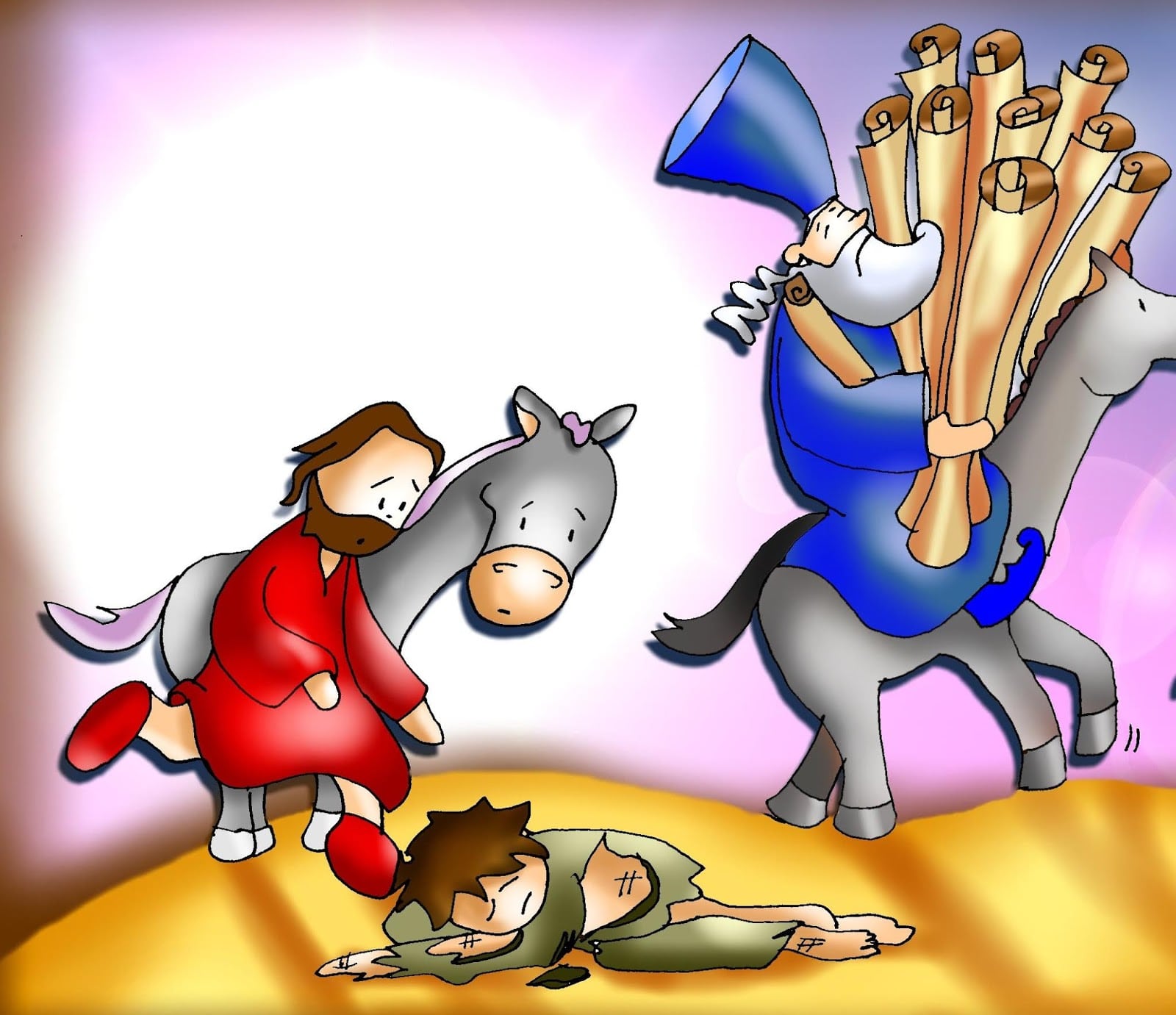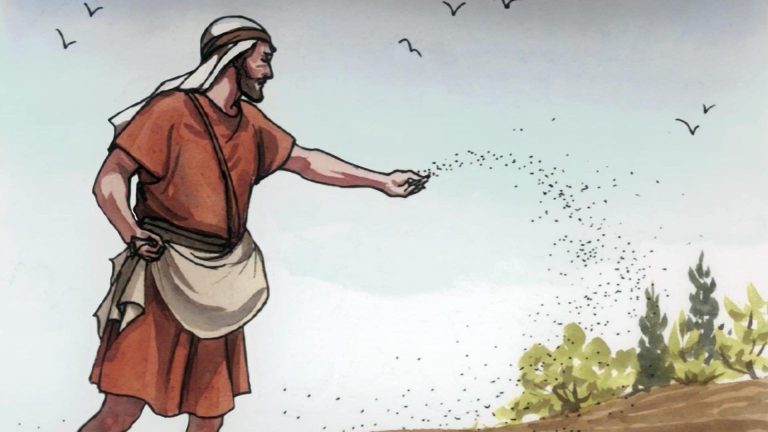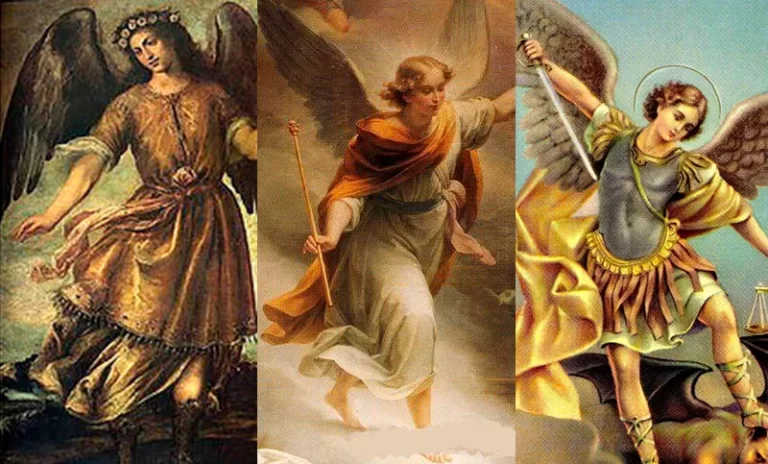The Parable of the Good Samaritan According to the Bible
In today’s article, we will talk about one of the best-known parables of Jesus that we find in the Bible, specifically in the Gospel of Luke (10; 29-37). This story, known as The Good Samaritan , is one of the most realistic where a great didactic use can be appreciated to transmit a teaching message to all who read it. We will delve into history, the reflection it leaves us and much more.
The Parable of the Good Samaritan
As already mentioned, the story of the Good Samaritan is one of the best known parables of Jesus, which is mentioned in the Gospel according to Saint Luke. On the other hand, unlike the rest of the parables mentioned in the Bible, the vast majority consider that this story actually happened.
This parable follows the same narrative line used by the apostle Saint Luke throughout his gospel, placing it in the category of “parables of mercy”. This story is told by Jesus himself who seeks to transmit the teaching of charity and mercy, emphasizing its importance in guiding men to piety and holiness. In turn, he seeks to educate people to follow the path of spiritual law and love of neighbor. Laws that are much more important than those that any state or country can impose.
Thanks to this story, we can have a better understanding of the definition of neighbor at that time. The figure of the Samaritan for the most orthodox groups of the Hebrew religion were considered heretics. Something that does not really limit or condition someone, so that he can help others. This last thought is of vital importance, especially today, where we find many people who tend to judge based on appearance and false beliefs, instead of paying attention to what really matters: actions.
Works are precisely one of the central themes of this parable, since Jesus comments that it is through works that we can demonstrate the manifestation of our faith. This thought results in a paradigm shift, in a revolution for the concept of faith that was held at that time among the followers of the Jewish religion, mainly in groups such as the Pharisees. Which the Lord Jesus Christ referred to as hypocrites, due to their rigidity in following the laws imposed by the state, often ignoring spiritual laws.
This story contrasts the merciful Samaritan with the prominent merciless religious leaders, who act as teachers of the law, completely forgetting the principles of true religion. Reason why, Jesus uses as an example a character who was despised by them as a figure capable of showing them their error.
History
The story of the parable begins when an authority of the law asks the Lord Jesus, with the intention of putting him to the test, what he should do to obtain eternal life. In response, Jesus Christ asks this person if he knows the laws written by Moses. The guard immediately proceeds to make two quotes from the Bible:
- “You shall love God with all your heart, with all your soul and with all your strength.”
- “You love your neighbor as yourself.
Jesus nods affirmatively and extends an invitation to him to behave as dictated by the laws he has just enunciated. The figure of authority, before this gesture of the Lord Jesus, asks another question to justify his previous questioning, which begins the parable of the Samaritan:
« At that moment an expert of the law appeared who, seeking to put Jesus to the test, asked him the following question:
Guard: ‘Teacher, what do I have to do to inherit eternal life?’
To which Jesus replied: ‘ What is written in the law? How do you interpret it?’
In response the man quoted: ‘ Love the lord your god with all your heart, with all your being, with all your strength and with all your mind. In addition also: Love your neighbor as yourself’.
Then Jesus tells him: ‘Very well answered, you just have to do that and you will live’.
As a form of justification, the guard asks Jesus again: ‘and who is the neighbor?’
Jesus replies: ‘A man was going down from Jerusalem to Jericho and fell victim to robbers. They took off his clothes, beat him and left, leaving him half dead. A priest was traveling along that same road who, looking at him, changed direction and continued on. In the same way, a Levite passed by on that road who, seeing him, turned aside and continued on his way.
But then, a Samaritan who was traveling came to where the man was and, selling him, took pity on him. He approached her, dressed her wounds with wine and oil, and bandaged them. She then mounted him on his own horse, took him to a lodging and took care of him. The next day, he took out two silver coins and gave them to the owner of the lodging, telling him to take care of him. He also told her to overspend everything, he will pay her back when he comes back. Which of these three do you consider that he proved to be the neighbor of the one who fell into the hands of the thieves?’ The guard replies: ‘The one who took pity on him.’ Jesus ends by saying: ‘Then go and do the same yourself.’
A particularity of this parable is that Jesus at no time explicitly defines how the law guard asks us who the neighbor is. Instead, he makes use of the narrative so that it can be inferred that the answer is: everyone who is capable of acting compassionately for another person. On the other hand, in the lawyer’s final response, he does not specifically say that he is the Samaritan, simply “the one who had compassion on him.”
This final response can be taken as a form of resistance, to having to admit or acknowledge by the guard that the priest and the Levite whose titles make them knowledgeable about God’s law, acted wrongly, while the Samaritan; rejected in the Jewish culture for being a heretic or an outcast is the one who does the right thing.
How is this Parable Structured?
As already indicated, this passage can be found in the Gospel of Saint Luke in chapter 10, between verses 25 to 37. While the narration used is of the didactic type, commonly used by Jesus Christ. On the other hand, this parabola is structured as follows:
- First, the approach of the guard to Jesus and the question he asks him to put him to the test.
- The answer of Jesus Christ in the form of a question.
- The guard’s response.
- The command of Jesus.
- The new question of the guardian of the law.
- The parable of the Good Samaritan told by Jesus in the form of a question to the guardian of the law.
- The response of the guardian of the law.
- Finally, the final command of Jesus.
Characters of the Parable of the Good Samaritan:
The Levite and the Priest
To understand in depth all the aspects of the parable of the Samaritan, it is necessary to understand all the elements that it contains, considering the historical context in which it is framed. In this way we can know specifically what Jesus was referring to when he says a certain phrase and why he refers to characters as significant as a priest, a Levite and a Samaritan. Because the mention of him is not random. There is a reason behind this, since if he had mentioned any three people the reflection would be the same, it is true; but his impact and criticism of the religious movements of the moment did not.
In the story, both the priest and the Levite walk past the bruised and injured Jew on the ground and ignore him to continue on their way. In the case of the priest specifically, Jesus mentions that he “was going down that road,” meaning that like the wounded man, he was on his way to Jericho. Now, the laws of that time said that if someone touched a corpse that was bloody he would remain impure until the end of the day, in addition; someone who is impure cannot participate in religious rituals.
On the other hand, in Leviticus (21:1-4) the priest was prohibited from having contact with a corpse before having service in a temple and in his daily life. The only exception was when said corpse corresponded to the remains of a close relative. If the Levite was also headed for Jericho and passed in front of the wounded man, he had no impediment to touch a dead person who was on the way.
During history there have been many hypotheses formulated about the attitude that each of the characters take in the story. Some mention that the priest or layman was on his way to Jerusalem to perform a religious service at the temple. Although this theory meets with an obstacle, since the sections of priests, Levites and laymen who carried out their weekly religious service used to mobilize in a group to Jerusalem, instead of going alone as history tells us. This makes it difficult to maintain this hypothesis and a reason would have to be justified why he traveled the road alone, for example; that it had been delayed or that it belonged to the “archlevites” who were very few and constantly served in the temple.
Another of the most robust hypotheses that justify why the priest and the Levite did not attend to the wounded man is due to the risk of contamination. But following this line of thought, these characters do not represent cruelty or impiety. Rather, putting ritual formalisms before mercy and forgiveness. Put more simply, the priest and the Levite live by a moral law where they preach forgiveness and mercy.
But these words are never carried into action as they contradict the rules set out in the previous paragraph. So we find ourselves facing the moral scale that Jesus speaks of, where on one side we find the law of the spirit and on the other side the letter of the law (the laws and regulations that these figures should follow).
Thanks to this, we can understand that Jesus Christ not only sought to teach the guard about his neighbor and how to achieve salvation and eternal life, but also made a strong criticism of the contradictions and hypocrisies committed by religious authorities in ancient times. Where they preach something that they cannot carry out due to their own norms that tell them what is the correct way to act. For this reason, Jesus disqualifies the norms of man arguing that the first law that we must follow is that of the spirit.
Other more liberal positions suggest that there is not such a marked emphasis on the priest’s prohibition on touching the wounded because of the possibility of contamination. Simply, Jesus wishes to accentuate the selfish, cowardly, insensitive character and the lack of compassion of these two figures (priest and Levite) by meeting the wounded man face to face and acting indifferently in the face of his pain.
the samaritan
That the Samaritan is the person who helps the injured Jew also makes a lot of noise in the guard’s ears. Because at that time, both; Jews and Samaritans were irreconcilable rivals. This is because each side regarded the other as heretical.
For the Jews, the Samaritans were heretics mainly because they worshiped on Mount Garizim (also known as Gerizim), instead of the Jerusalem temple as they used to do. On the other hand, the only prophet that could be allowed was Moses, so they rejected everything the Talmud said. The Samaritans, on the other hand, strongly rejected the Jews due to the multiple occasions in which they attacked and destroyed the Garizim sanctuary.
These reasons accentuate the moral distance between the Samaritan and the Jew, but at the same time it makes the mercy that the Samaritan had gain relevance, who is able to put aside all the rancor and conflicts that exist between both parties to offer help in this time of need. This also generates a greater impact on the notion of neighbor that the Lord Jesus preaches.
In fact, he says it himself: “love for one’s neighbor is to do this, and the neighbor is this one, a Samaritan, a stranger”.
Geographic Context: Significance of the Road from Jerusalem to Jericho
The road from Jerusalem to Jericho is also quite peculiar, since during the period in which Jesus lived, it was known as “the road of blood”. Due to the large number of thieves who used this road as a site of operations, which generated a high rate of crime, murders and injuries. There was too much blood that was constantly spilled in that place.
Geographically, the road is located about 750 meters above sea level and continues down about a thousand meters until it reaches Jericho, which is located in the Jordan Valley, at an altitude of 258 meters below sea level.
There is no better way to describe this path than using the description made by Martin Luther King in his last speech the day before he was assassinated. Which was pronounced on April 3, 1968 and is entitled “I’ve Been to the Mountaintop”, which translated into Spanish means “I have been on top of the mountain”. During this speech he mentions his journey between Jerusalem and Jericho as follows:
« I can see why Jesus used this path as the setting for his parable. It is a winding, winding road. It’s really conducive to ambush .”
« That is a dangerous road. In the days of Jesus, it became known as the bloody path. And you know, it’s possible that the priest and the Levite looked over the man lying on the ground and wondered if the robbers were still around. It is also possible that they felt that the man on earth was only pretending, that he was acting as if he had been robbed and injured in order to capture them, to lure them in for a quick and easy seizure. Thus, the first question that the priest asked himself and the first question that the Levite asked himself was: if I stop to help this man, what will happen to me?
But then the Samaritan came to him and he would wonder just the opposite: if I don’t stop to help this man, what will happen to him? «
These words of Luther King perfectly convey what it would be like to cross this path, it places us in the historical context of the time of Christ, and even allows us to frame ourselves in the moral position in which the priest, the Levite and the priest must have found themselves. Samaritan when he saw himself face to face with the wounded man.
Teaching and Reflection
As we have been exploring different aspects of this parable, we have been able to discover many backgrounds behind it: teachings about our neighbor, the means to achieve salvation, social criticism, among other things. Even so, the narration seeks to convey two fundamental or main messages:
- Give a lesson on mercy and on how to treat those most in need.
- Make the distinction between the spiritual law and the letter of the law; indicating that it will be impossible to achieve eternal life if we only abide by the letter of the law.
In addition to this, Jesus Christ does not teach how we can all be neighbors and that when showing mercy and compassion there should be no distinction between men, regardless of their social, cultural, ethnic, political, economic, religious differences, etc. We must never forget that prójimo means “next”, “close”.
Another important lesson that we can learn from reading is that love is not denied to anyone; love is for everyone, it knows no borders or limits. The only ones who can hinder the path of love are ourselves following wrong doctrines and thoughts. The way of Jesus is the way of love. At the same time; this path must be traveled through actions. Since our works are the ones that really define our love towards others, towards ourselves and towards the Lord Jesus and his almighty father.
Jesus Christ, through this narrative, not only invites us to love, he also tells us that we must do so regardless of whether we must assume the role of an outcast, despite the fact that our action may be considered socially unacceptable.
The parable of The Good Samaritan for Children , represents a perfect story to educate them about many Christian values: the meaning of love and how to show it, what is the neighbor, understand that the laws of God often do not coincide with the laws and rules imposed by man, the path to salvation, among other things. If you have children (especially young children), we recommend you do this reading together with them and at the end, thoroughly analyze all the content you have. Allow them to question what is happening with the Samaritan and the wounded, and serve as a guide to clarify all their doubts.

Hello! Let me enthusiastically introduce myself as a dedicated blogger fueled by an intense passion for meticulously crafting insightful and well-researched blogs. My mission revolves around providing you, dear readers, with a veritable treasure trove of invaluable information.







